GYPSY MUSIC
Gypsy Music may refer to: Gypsy music, also known as Gypsy style, Romani-related music played in a characteristic gypsy style and Romani music, the original music of the Romani people
- Gypsy Jazz, jazz played by Romani people
- Gypsy Punk, a hybrid of Romani music and punk rock
- Gypsy Scale, a musical scale sometimes found in Romani music
Characteristic features are: Chords are more often varied than in the original melody. Harmonic transitions are introduced that did not exist in the original. A harmonic transition that occurs in the original is emphasized so that it sounds as if it were an added harmony.
Do Gypsies play music?
Gypsies play in the field of music, song, and the dance, not only in the western part of the Orient, but also in Europe.
Who was in the band gypsy?
James Walsh
Keyboard instrument
Enrico Rosenbaum
Guitar
Bill Lordan
Acoustic Drum Kit
Doni Larson
Bass
Randy Cates
Bass
Jay Epstein
Acoustic Drum
What is gypsy dance called?
It can also be referred to as Romany dance, due to the Romany name given to the traditional, proud gypsies. Gypsy dance, the folk dancing of Romany people from all over the world, are dances of graceful and joyful movements, expressing freedom, passion and playfulness.
What is gypsy Jazz music?
Gypsy Jazz (also known as gypsy swing, jazz manouche or hot club-style jazz) is a style of small-group jazz originating from the Romani guitarist Jean "Django" Reinhardt (1910–53), in conjunction with the French swing violinist Stéphane Grappelli (1908–97), as expressed in their group the Quintette du Hot Club de ..
How do you dress like a modern Gypsy?
Modern bohemian clothing consists of crop tops, crochet bralettes, fitted trousers, hip hugging skirts and bodycon gypsy dresses. Pair these with metallic gladiators, fringed sling bags, flower tiaras and feather jewelry.
What type of music do Romanians listen to?
Overall, the most preferred music genre in Romania, for three out of four surveyed groups, was pop, disco and dance. By contrast, four out of ten families without children mostly listened to old music in 2020
What role does music have in the Roma culture?
In the life of many groups of Roma, music plays an important and living role: on the one hand within the family or group, dur- ing celebrations, spontaneous get-togethers or other occasions, on the other as a means of earning money.
Romani music
Romani musicians at a wedding in the Czech Republic in 2005
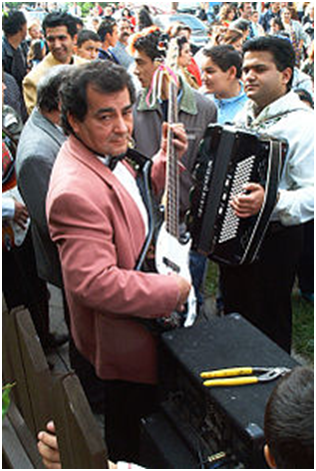
Romani people
Flag of the Romani people
Archaeology Cuisine Culture Dance Discrimination against Romani people Dress Folklore History Language Media Music Names People Religion Settlements.
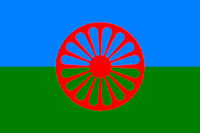
It was approved by the representatives of various Romani communities at the first and second World Romani Congresses (WRC), in 1971 and 1978. The flag consists of a background of blue and green, representing the heavens and earth, respectively; it also contains a 16-spoke red dharmachakra, or cartwheel, in the center.
What does the Romani flag symbolize?
The Roma flag is dark blue on top (representing the heavens) and green below (representing the earth) with the red sixteen-spoked chakra in the center (in recognition of the Indian origin of the Roma), representing movement and the burst of fire from which all creation emerged at the beginning of time
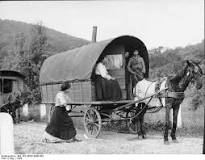
The Roma do not follow a single faith; rather, they often adopt the predominant religion of the country where they are living, according to Open Society, and describe themselves as "many stars scattered in the sight of God." Some Roma groups are Catholic, Muslim, Pentecostal, Protestant, Anglican or Baptist
Most Eastern European Roma are Roman Catholic, Eastern Orthodox, or Muslim. Those in Western Europe and the United States are mostly Roman Catholic or Protestant. In southern Spain, many Roma are Pentecostal, but this is a small minority that has emerged in contemporary times.
What race are Romani Gypsies?
The Romani (also spelled Romany or Rromani /ˈroʊməni/, /ˈrɒ-/), colloquially known as the Roma, are an Indo-Aryan ethnic group, traditionally nomadic itinerants. They live in Europe and Anatolia, and have diaspora populations located worldwide, with significant concentrations in the Americas.
Studies based on genome-wide autosomal single nucleotide polymorphism (SNP) data determined the source of South Asian and European ancestries of the Romani people, and concluded that Roma are an admixed ethnic group with West Eurasian and South Asian ancestry..
“Roma” is the word (ethnonym) that the Roma use to describe themselves: it is the term for the members of that specific people and it is Romani for “man”. “Gypsy” is a derogatory, disparaging term – for many an insult — used by the majority population to define the Roma people.
What language do Gypsies talk?
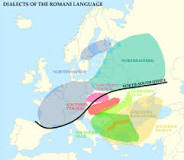
Romani
Romani (/ˈrɒməni, ˈroʊ-/; also Romany, Romanes /ˈrɒmənɪs/, Roma; Romani: rromani ćhib) is an Indo-Aryan macrolanguage of the Romani communities. According to Ethnologue, seven varieties of Romani are divergent enough to be considered languages of their own.
Romani people by sub-group
Romani diaspora by country
Romani music (often referred to as gypsy or gipsy music, which is sometimes considered a derogatory term) is the music of the Romani people who have their origins in northern India ( Lambi-Judai by Gypsy Singer Rehma) but today live mostly in Europe.
Historically nomadic, though now largely settled, the Romani people have long acted as entertainers and tradesmen. In many of the places Romanies live they have become known as musicians. The wide distances travelled have introduced a multitude of influences of: Byzantine, Greek, Arabic, Indian, Persian, Turkish, Slavic, Romanian, German, Dutch, French, Spanish, and even Jewish musical forms.
It is difficult to define the parameters of a unified Romani musical style, as there are many differences in melodic, harmonic, rhythmic and formal structures from region to region. Lyrics to Romani songs are often sung in one or more dialects of the Romani language, and dance frequently accompanies Romani music performance.
The quintessentially Spanish flamenco is to a very large extent the music (and dance, or indeed the culture) of the Romani people of Andalusia.
Apart from Romani music for local use, in Eastern Europe a separate Romani music originated for entertainment at parties and celebrations. This music drew its themes from Hungarian, Romanian, Russian and other sources.
Later on it gained popularity in Western Europe, where many Romani orchestras were active, playing sophisticated melodies of East European origin. Probably the most influential Romani musician was Django Reinhardt (1910–1953).
Original Romani music
Original Romani folksongs, not derived from the countries where the Romani live, are relatively rare. This particular folk music is mainly vocal and consists of slow plaintive songs and fast melodies which may be accompanied by dancing. The fast melodies are accompanied with tongue-clacking, hand-clapping, mouth-basses, clicking of wooden spoons and other techniques.
There are five main components that are found throughout Romani music of various territories. The first is the use of three voices or parts: the melodic line, the terce and the quint either through vocalization or instruments. The second is syncopation, where the music starts right after a beat while maintaining a consistent rhythm.
The third is having the music played in different phrases, meaning that the entrance and exit of different musical themes are felt at different times throughout a song either through rhythm or instruments. The fourth is harmony, where a minor chord is used instead of a major chord. The last is singing, where natural vocal abilities are emphasized.
The development of Romani music dates back to the playing of instruments such as lutes in the late 1400s in Hungary and Italy. Roma would perform with non-Roma as entertainers in any aspect of performance. Eventually, as organized religion gained traction, performance became less emphasized and sometimes prohibited for non-Roma populations, so Roma filled all professional entertainment spots.
They also performed at life events such as weddings, baptisms, funerals and circumcisions. Because there is no one nation state for Romani, they were often forced to create their own living spaces within the countries they settled. Musical and cultural influences were taken from the countries where they lived and incorporated into their own music such as instruments, languages and subject matter of the music itself. Some songs incorporate the Romani language.
Country-Related Music
Most Romani music is based on the folk music of the countries where the Romani went through or settled. Local music is adopted and performed – usually instrumental – and, slowly, it is transformed into Romani styles, which are usually more complex than the original styles. In its turn, Romani music has greatly influenced the local music. Among these the Hungarian versions have become best known, although examples of Romani music in other countries also endure.
Spain
The Romani people of Spain (Iberian Kale people) have contributed significantly to the Andalusian musical tradition known as flamenco. Although it is not, strictly speaking, Romani music, Flamenco is closely associated to this ethnicity and a significant proportion of famous flamenco artists are Iberian Kale people.
Bulgaria
Due to the significant Romani population in Bulgaria, this ethnic group's music is very popular. Chalgamata music is also played by Romani musicians in Bulgaria.
Romania
Wandering musicians in the wine gardens of Transylvania (Pennell, 1893)
The Lăutari were traditional Romani musicians, playing at various events (weddings, funerals, etc.)
The manele genre which is very popular in Romania is supported by Romani ethnic musicians, too.
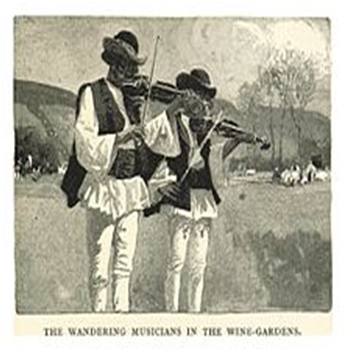 Russia
RussiaA choir in Russia was the Sokolovsky choir.
In 1931, a public Romani theatre, Romen Theatre, has been established in Moscow incorporating Romani music and dance into theatrical performances.
Turkey
Romani people are known throughout Turkey for their musicianship. Their urban music brought echoes of classical Turkish music to the public via the meyhane or taverna. This type of fasıl music (a style, not to be confused with the fasıl form of classical Turkish music) coupled with food and alcoholic beverages is often associated with the underclass of Turkish society, though it also can be found in more "respectable" establishments in modern times.
Romanis have also influenced the fasıl itself. Played in music halls, the dance music (oyun havası) required at the end of each fasıl has been incorporated with Ottoman rakkas or belly dancing motifs. The rhythmic ostinato accompanying the instrumental improvisation (ritimli taksim) for the belly-dance parallels that of the classical gazel, a vocal improvisation in free rhythm with rhythmic accompaniment. Popular musical instruments in this kind of fasıl are the Clarinet, Violin, Kanun and Darbuka. Clarinetist Mustafa Kandıralı is a well known fasıl musician.
Balkans
A typical type of Romani music is known as Tallava. Tallava was originated by the Roma minority in Kosovo in the 1990s.The genre of Tallava was later adopted among the Ashkali group. Tallava is common among Albania. This genre has influences from other music genres such as Greek (Skiladiko) and Bulgarian (Chalga). It also blended with Turkish (Arabesque), Arabic (Arabic pop music), Serbian (Turbo-folk) and Albanian music.
Hungary
Panna Cinka
The Rajkó Orchestra and Folk Ensemble is known for preserving Hungarian Roma music, dance and costume culture since 1952. Their work carries on the traditions of century-old generations. Their performances can be seen at a number of venues, among others at the Danube Palace of Budapest during the season between 1 May and 31 October.
Another notable Roma music formation is Ando Drom. Established by Jenő Zsigó in 1993, the Ando Drom Foundation serves to promote Romany art, encourage young talent and to allow the Romany encounter their own culture within the community, through the productions of the band Ando Drom, among others, a group pioneering the reinterpretation of Romany music and dance. Their music is contemporary in nature. Besides authentic Romany folk songs, they play a kind of urban Romany music which gives a voice to the present-day reality of the community. They avoid reconstructing the manners of old musicians and singers or their style.
Traditionally there are two types of Romani music: one rendered for non-Romani audiences, the other is made within the Romani community. The music performed for outsiders is called "gypsy music", which is a colloquial name that comes from Ferenc Liszt.
They call the music they play among themselves "folk music". Although Romani musicians in Hungary were mentioned in books since the 15th century, musicianship as an occupation didn't become widespread among the Roma until the latter half of the 18th century. The Roma started to develop an ethnic music culture from the 1970s and they obtained national minority status in Hungary. Two famous Romani musicians of the 18th century were Mihály Barna and Panna Cinka. The band of the latter had two violins ("prim" and "kontra"), a cimbalom, and double-bass.
The boom of Romani music in the last decades of the 18th century was triggered by the Hungarian nationalist movement. New genres started to evolve in music, and dance. Romani bands performed in more places, such as parks, promenades. Patronized by aristocrats, Romani musicians started to learn more about Viennese classicism and European musical culture. The unique harmonization of Hungarian "gypsy music" started to differ from its Balkanian counterpart. This was one major factor of the Western European success of Hungarian "gypsy music".
This music was exotic, but still accessible for the masses. Another contributory factor for success was the tradition of playing without scores. This further popularized the Romani musicians since they learned and play music by ear. Romani bands first consisted of strings, harp and duda. Later on harp was replaced with cimbalom.
The harmonies accompanying the melodies became more dominant in their music. Duda was replaced by clarinet and tárogató. The instrumentation was impacted by Western classical influences, so the most popular form was: two violins (prímás and kontrás), cimbalom, double bass. Bigger bands had clarinet, cello, and later another violin (tercprímás).
In the early 19th century, Romani musicians became the representatives of national music. During the Hungarian Revolution of 1848 in Hungary, Romani bands played their music for soldiers before and after the battle to encourage and entertain them. After the loss of the war, these musicians gained a lot of respect from the country. Romani music became the symbol of desired freedom.[14] A new genre called magyar nóta evolved by around the middle of the century.
The composers of the time wanted to sound more like Western European music by extending the folksong form and adopting some elements of Western style. This genre was also performed by Romani musicians, thus it started to be labelled as "gypsy music" as well. The most famous Romani composer of this century was Pista Danko (1858–1903).
Western Europe
The sophisticated music of the Romani orchestras that visited Western Europe became popular in the second half of the 19th century and had its heyday from the 1920s onwards to about 1960, although this music remains popular still today. The tours of rajkó-orchestras – featuring young Romani-musicians – added much to its popularity. The rajkó boys were both endearing and virtuoso, a combination that enchanted the public.
The cimbalom, unknown to the Western audience, added its characteristic sound to the violins played in a Romani style. Romani virtuoso like Bela Babai,[15] Lajos Veres, the many members of the Lakatos family and others became famous. Nowadays the names of Roby Lakatos, Buffo Sandor and Sandor Jaroka still are household names for the Western connoisseurs of this type of music.
Since 2014, an E.U.-supported project named Music4Rom has highlighted the importance of the Romani music in classical music. Jorge Chaminé is one of the founders of this project. The values promoted by Music4Rom include recognition, understanding of others, creativity, tolerance and admiration. The project promotes Romani values to build intercultural bridges, social inclusion and children's education through music.
GYPSY MUSIC ( That Every One Loves) By Ishtar Alabina
LYRICS:
De granada a Casablanca
Enterró mi fantasía
Una guitarra, y una gitana canta
Canta mi Andalucía
De llegar a Casablanca
Tú me bailas en la playa
Con tus ojos negros, chiquita
Y tu boca enamorada
Enamorada como tú (como tú)
Enamorada como tú (como tú)
Enamorada como tú (como tú)
Como tú, como tú, hay nadie como tú...
Yalabina yalla
Ya habibi yalla
Nifrah win ool, masha allah
Yalabina yalla
Ya habibi yalla
Nifrah win ool, masha allah
Yalabina ala tool
Yalabina ala tool
Yalabina ala tool
Ah ya aili waili waili waili waili
Ulu inshalla...
De granada a Casablanca
Enterró mi fantasía
Una guitarra y una gitana canta
Canta mi Andalucía
De granada a Casablanca
Enterró mi fantasía
Una guitarra y una gitana canta
Canta mi Andalucía
Ayunak helwa
Shafayfek ghenwa
Ayunak helwa
Shafayfek ghenwa
Ah ya aili waili, waili, waili, waili,
Ulu inshallah...
De Granada a Casablanca
enterré mi fantasia
Una guitarra y una gitana canta
Canta mi Andalucia
Yalabina yalla
Ya habibi yalla
Nifrah win ool
Masha Allah...
Yalabina yalla
Ya habibi yalla
Nifrah win ool
Masha Allah...